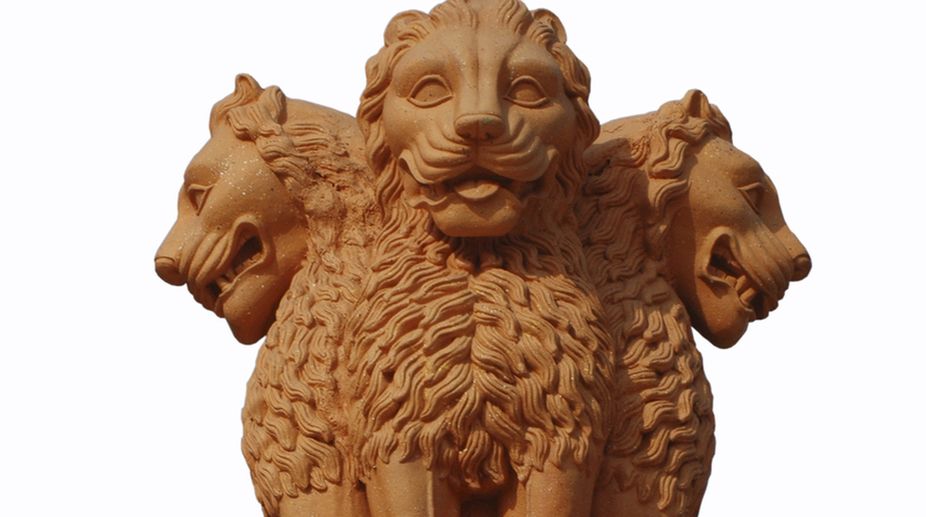This article discusses the significance of our national emblem, taken from the Mauryan emperor Ashoka, on Indian currency. It sheds light on the glorious past of ancient India. King Ashoka was a renowned conqueror who later became a Buddhist and tried to propagate the teachings of the Lord Buddha. The 50-foot tall pillar at Sarnath marks the site of the Buddha's first sermon.
The national emblem of India is an adoption of the lion capital. The original lion capital has four lions (the fourth is hidden from view) perched on a circular abacus which is girded by four smaller animals – guardians of the four directions: the lion of the north, the elephant of the east, the horse of the south and the bull of the west.
The entire structure of the lion capital was carved out of a single block of polished sandstone. The animals are separated by wheels known as 'Dhamma Chakras' or wheels of righteousness. In the adapted emblem, there is only one wheel in the centre. The platform rests on an inverted lotus flower – this does not figure in the national emblem. The lions are considered to be symbols of power, courage and victory.
Advertisement
While the four animals were originally supposed to represent the four stages in the life of the Buddha, a more secular interpretation is that they stands for equality and justice in all spheres of life. The Dharma 'chakra', which epitomises the triumph of righteousness, has 24 spokes representing the hours in a day and portray the passage of time. The spokes signify moving forward in life and thus one avoids stagnation of the mind. The animals appear to be rolling the chakras along the cylinder's circumference.
The three lions in the National Emblem signify strength, courage and confidence. The Indian national emblem has the words "satyameva jayate" which have been taken from an inscription in Devanagari script beneath the lion capital. This phrase from the 'Upanishad' literally means "truth alone triumphs". Thus the emblem is a depiction of the eternal and universal power of righteousness and truth.
The Lion pillar was adopted as the National Emblem of India on 26 January 1950, the day India became a Republican Nation and thereafter it was embedded in the Indian currency. As we can see the above information on our national emblem conveys the message of justice, truth and universal power and also the principles of liberty and equality. These principles are enshrined in the constitution of India (preamble to the constitution).
This shows the importance of Indian history even today. The three lions stand tall and proclaim the country's commitment towards peace, justice and tolerance.
In its structure the emblem accentuates the fact that India is a confluence of cultures, its heritage is seeped into the austere spiritual doctrines of Buddhism along with a deep appreciation for the philosophical canons from the Vedas. The national symbol of India stands for the national identity.
(Class IX, Don Bosco School, Park Circus, Kolkata)
Advertisement












